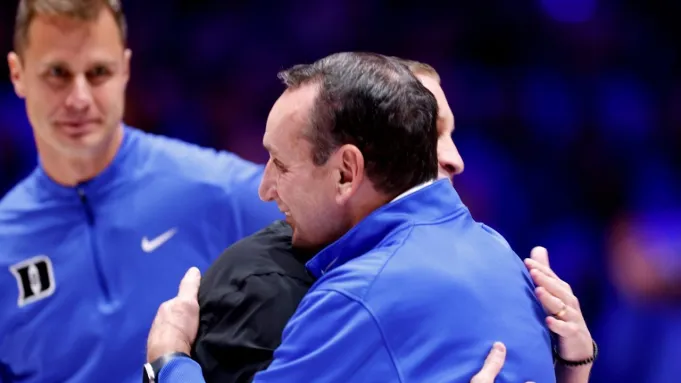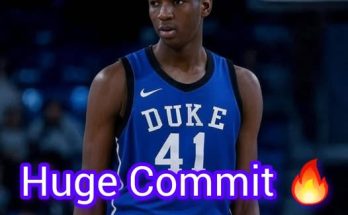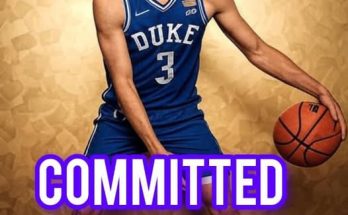When people think of Duke University’s basketball legacy, one name towers above all others: Mike Krzyzewski, affectionately known as Coach K. His reign as head coach of the Blue Devils spanned over four decades, during which he built one of college basketball’s most formidable dynasties. From five NCAA championships to an indelible influence on the sport, Coach K became the face of Duke athletics — and arguably the highest-earning figure in the university’s history.
But what happens when the iconic coach steps away? And more intriguingly, who ends up being Duke’s biggest earner if it’s not the man who defined the program for so long?
It may come as a surprise to many that, with Coach K off the payroll, Duke’s top earner is not even a basketball coach. In fact, the university’s most lucrative contract belongs to someone who has no involvement with coaching hoops at all. This curious fact shines a light on a broader reality about collegiate sports programs today, where revenue streams and compensation structures have become complex, multi-faceted, and sometimes unexpected.
Mike Krzyzewski retired after the 2021-2022 season, closing the chapter on a legendary career that not only transformed Duke but also left an imprint on the entire sport. Throughout his tenure, Coach K was handsomely compensated, drawing a salary often cited as among the highest for college coaches nationwide — reportedly north of $10 million annually when combining base salary, bonuses, and endorsements.
His departure naturally left a vacancy, not just in the coaching lineup but also in the Duke payroll hierarchy. Yet rather than another basketball coach stepping up as the university’s top earner, the mantle now belongs to a different figure entirely: Duke’s head football coach.
Football, long overshadowed by the Blue Devils’ basketball brilliance, has surged in prominence and investment at Duke over the last decade. Historically a basketball-first school, Duke has expanded its athletic ambitions, especially in football, investing in facilities, recruiting, and coaching salaries to elevate its competitiveness in the Atlantic Coast Conference (ACC) and nationally.
This strategic pivot has culminated in Duke’s head football coach signing a contract that surpasses even what the basketball coach used to make. The figure is significant — in the realm of $11 to $12 million annually, including bonuses and incentives — placing this coach as the university’s highest-paid athletic staff member, eclipsing the legacy left behind by Coach K.
This development is noteworthy for several reasons. First, it reflects the evolving landscape of college sports, where football programs often drive substantial revenue, media attention, and donor engagement. Football’s massive TV contracts, bowl game payouts, and merchandising opportunities can translate into enormous financial impact for schools, sometimes even overshadowing basketball, especially outside of powerhouse basketball-centric institutions like Duke.
Second, it underscores Duke’s broader strategic goals. By investing heavily in football, the university signals its intention to be a comprehensive athletic powerhouse, rather than a single-sport juggernaut. This means diversifying revenue streams, attracting a broader fanbase, and increasing institutional visibility through football success. It also suggests Duke recognizes that the changing economics of college sports require adapting compensation models to match the demands of each program’s potential and competitive environment.
Third, it illustrates the shifting notion of ‘biggest earner’ within university athletics. While the spotlight traditionally shines on marquee basketball coaches, today’s compensation landscape is more fluid. Coaching salaries can be influenced by a variety of factors including market demand, program revenue, TV exposure, and competitive parity within a sport. Duke’s highest-paid coach no longer being the basketball head coach signals a new era where football’s financial muscle is flexing more prominently at the university.
But what does this mean for Duke basketball and its storied tradition? Is this a sign that the basketball program’s dominance is waning, or simply a natural evolution in the broader context of college sports?
To understand that, one must first appreciate the legacy Coach K left behind. When he took over Duke in 1980, the program was a respected but not dominant force. Over the next 40-plus years, Coach K built a culture of excellence, winning five national titles (1991, 1992, 2001, 2010, and 2015), making 12 Final Four appearances, and producing an endless stream of NBA talent and All-Americans. His impact was not only in wins and losses but also in shaping the brand of Duke basketball as a symbol of leadership, discipline, and sustained excellence.
Coach K’s retirement did not immediately diminish Duke’s basketball stature. The program has continued to attract top recruits and maintain a competitive edge in the ACC and nationally. But replacing such a legendary figure is always a challenge, both in terms of on-court success and the intangible aura that comes with decades of consistent winning and national recognition.
Meanwhile, football has grown into a lucrative venture for Duke. Historically overshadowed by the likes of North Carolina, Virginia Tech, and Florida State in the ACC, Duke football made a significant leap forward with improved recruiting classes, coaching hires, and facility upgrades. This growth has been reflected in the financial commitment the university has made to its football head coach, with a compensation package that reflects not only the program’s ambitions but also the broader marketplace for successful college football coaches.
This rising compensation may seem ironic given Duke’s traditional basketball roots, but it is emblematic of a national trend. Across many universities, football coaches tend to earn more than basketball coaches due to football’s sheer revenue-generating capacity. High-profile programs leverage lucrative TV deals, bowl games, and conference championships to command the salaries their success can justify.
Duke is no exception. The university’s increased investment in football signals a diversification of athletic priorities and revenue sources. And while basketball remains a marquee sport for Duke, football’s financial growth cannot be ignored — especially in the context of college sports’ escalating commercialization and media landscape.
Beyond just football and basketball, this salary dynamic may also hint at Duke’s broader athletic ambitions. The university fields competitive teams in many other sports — lacrosse, soccer, tennis, and more — but these tend to operate with more modest budgets and salaries. The football coach’s position as the highest-paid athletic employee highlights where the school sees its biggest potential for return on investment and national visibility outside of the hardwood.
What about the implications for student-athletes, fans, and the university’s culture? For players, the investment in coaching salaries can translate into better training, facilities, and recruitment, creating an environment conducive to competitive success. For fans, it may bring renewed excitement and attention to football games alongside the perennial basketball fervor. And for the university culture, it reflects a commitment to excellence across multiple sports rather than a singular focus.
Still, there may be critics who see this shift as a sign of changing priorities, potentially fearing that basketball’s historic dominance could wane as football claims more resources and spotlight. Such concerns are not unwarranted, but history shows that successful athletic programs often coexist with varied sports investments, as schools seek to broaden their appeal and financial stability.
Moreover, Duke’s basketball program, while adapting to the post-Coach K era, remains a vital part of the university’s identity. The school’s commitment to academic excellence and athletic competitiveness continues to attract top talent, and the coaching staff strives to uphold the traditions instilled by Coach K.
In the end, the fact that Duke’s biggest earner today is not a basketball coach but the football head coach speaks volumes about the shifting economics and priorities in college sports. It is a testament to the complexity of managing a multi-sport athletic program in the 21st century, balancing tradition with innovation, and basketball prestige with football’s expanding influence.
Mike Krzyzewski’s legacy as the greatest basketball coach in Duke history remains untarnished. But the university’s evolving compensation landscape shows that in modern college athletics, success and revenue are no longer confined to a single sport. Duke’s investment in football’s future — through its highest-paid coach — underscores a strategic vision that embraces growth, competitiveness, and financial savvy across its athletic programs.
As the Blue Devils navigate the post-Coach K era, fans and observers will watch closely to see how both basketball and football continue to shape Duke’s national identity. One thing is clear: the era of singular dominance may be giving way to a more diversified athletic future, where Duke’s biggest earner no longer coaches hoops but leads on the gridiron.



